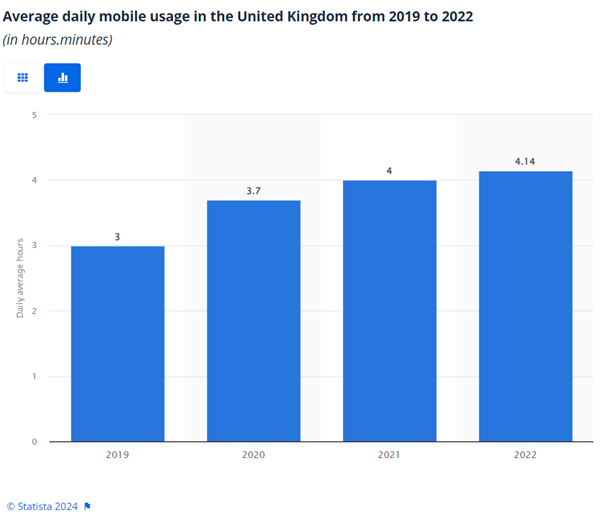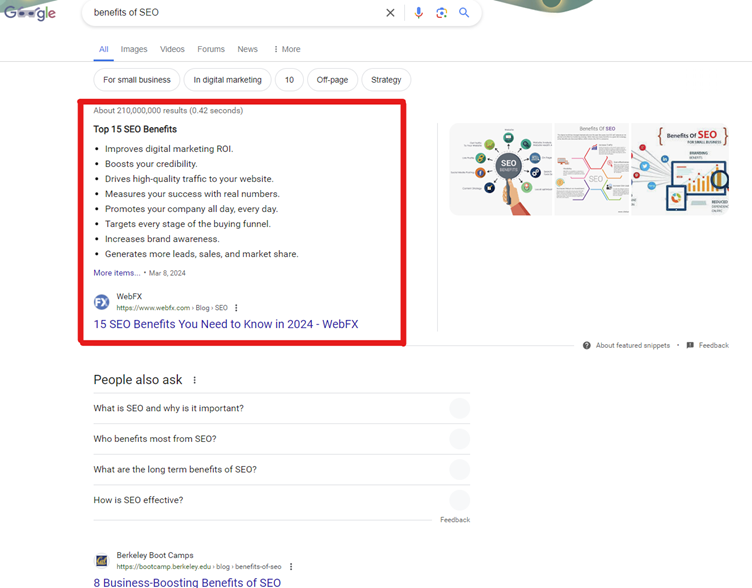Unlike SEA (Search Engine Advertising), which uses ads, SEO (Search Engine Optimisation) strategy relies on traffic generated by natural and non-sponsored search engine results.

To effectively intervene in this area, SEO specialists work to influence Google’s 200 analysis criteria and allow the site to position itself as well as it can. While the SEO strategy is based on 3 pillars (technique, semantics and popularity), it constantly adjusts and aims for long-term results…
What is an SEO Strategy?
Identifying the Competition
First of all, an SEO strategy is built by studying the competition to adapt its actions and ambitions according to the results of the SERP on your theme. Note that the acronym SERP, for ‘Search Engine Result Page’, refers to the web page generated by a search engine.
In concrete terms, it involves identifying all competitors, studying the keywords they rank for, auditing their website, analysing their notoriety, monitoring their activities on social networks and observing their evolutions.
Good to know: avoid doing overly general searches that serve big brands and large sales sites. Go for more specific queries. For example, instead of ‘coat’, opt for ‘pea coat’.
Establishing SEO Strategy Objectives
With a better knowledge of the competition and after defining your target audience, developing a Search Engine Optimisation strategy involves establishing objectives before each action. Here, relying on the SMART method (Specific, Measurable, Achievable, Realistic and Time-bound) is customary.
For example, it can look like this: increase the number of leads generated by the website by 25% in 6 months. To do this, pages currently appearing on the 2nd page must be moved up to the 1st in Google’s results pages.
Good to know: KPIs ‘Key Performance Indicators’ are key indicators to measure your progress: click-through rate, organic sessions, number of pages per session, conversion rate, etc.
Site Analysis and Audit
The SEO strategy continues by satisfying Google’s expectations – especially in terms of your website. This part implies a perfect knowledge of SEO since it is necessary to determine the elements to work on as a priority among the many SEO criteria of the search engine.
There are a hundred points to analyse on the agenda, such as SEO techniques, site architecture, keyword examination, responsiveness, netlinking, backlinks, and UX (User Experience).
Good to know: SEO specialists use several tools (often paid) to carry out this audit: Ahrefs, Botify, Semrush, SEObserver, Moz, Allorank, Hotjar, Google Mobile Test, Google’s PageSpeed, etc. The idea is to get the best out of them on certain segments of the analysis such as SXO, Google positioning monitoring, backlink evaluation, etc.
SEO Strategy: What Levers to Act On?
Technical Optimisation
There are several technical factors that influence an SEO strategy: HTTPS, HTML, 404 Errors, Sitemap and Robots.txt are among the priority elements to deal with.
Next, current usage must be considered, which reveals that UK users spend 4 hours and 14 minutes per day on their smartphones in 2022, an increase of 3.5% on the previous year. Therefore, the website must be ‘mobile friendly’ to ensure a pleasant mobile browsing experience.

Technical optimisation also involves page load time. Google has three Core Web Vitals that directly influence the positioning of results pages. These are LCP (Largest Contentful Paint), which measures the main content’s load time; FID (First Input Delay), which focuses on the loading time after a visitor’s action; and CLS (Cumulative Layout Shift), which is related to the visual stability of the pages.
Good to know: an SEO strategy also takes into account the technical enhancement of web page content: beyond appropriate keywords, it involves optimising hn tags, meta descriptions and URLs.
Relevant Semantic Content
Beyond the technical dimension, the effectiveness of an SEO strategy is based on the production of relevant content likely to appeal to both web crawlers and Internet users. This requirement assumes, on the one hand, a search for keywords bringing traffic and, on the other hand, text that meets visitors’ search intent.
SEO specialists can use different levers in this area by playing on local searches, national queries, international traffic, frequent questions or the long tail. Their SEO strategy can also be structured around a semantic silo, with a ‘mother’ page around which ‘daughter’ pages are articulated to deal with all aspects of a theme.
Good to know: video content continues to weigh on SEO strategy. Did you know that in 2022, 82% of global Internet traffic was related to streaming and video downloads?
User Experience
UX or User Experience is at the heart of Google’s concerns – the latest updates to its algorithm systematically aim to improve this aspect. For the SEO strategy, this means that the weight of the human element is becoming increasingly important compared to web crawlers.
Therefore, certain key points must be addressed: facilitating page reading (table of contents, breadcrumb trail, aesthetic layout, coherent structure…, etc.), improving loading speed (beyond 3 seconds, half of the traffic is lost), offering a ‘responsive’ site (to please the growing number of mobile users), and reducing invasive pop-ups and advertisements.
Good to know: to combine UX and SEO, it’s essential to offer intuitive navigation, optimised internal linking, and a responsive, reactive site design.
Why Think About SEO Strategy in the Long Term?
Position 0 (P0) on Specific Queries
An SEO strategy can aim for position 0— namely, the one at the very top of the Google results page. Over the years, the search engine has continuously redefined the ranking of its results. Today, it will highlight the answer it deems most relevant to the question asked. This can take the form of text, a paragraph, a list, a video, or a comparison table.

Good to know: the objective of position 0 is only valid for specific queries, with a determined question.
The Long Tail, the Loyalty and Quality Approach
An SEO strategy based on the long tail is a long-term positioning: here, the objective is to attract visitors to a specific query. There will be fewer of them but of higher quality. The long tail search is characterised by a sequence of 3-4 keywords, forming a keyword chain. For example, instead of positioning yourself on ‘coat’, which is highly competitive, you can work on ‘Where to find a waterproof navy coat’ to sell your yellow raincoats better!
Good to know: in an SEO strategy, we must distinguish the generic word ‘coat’, the specific word ‘navy coat’ and the long-tail keyword ‘where to find a navy coat?’

Link Building, the ‘Recommendation’ Asset
Finally, a good SEO strategy relies on link building – having links from other sites to yours. This manoeuvre involves obtaining recommendations from external sites, thus increasing your authority in this area. Rated from 1 to 100 by Google, the latter directly reflects the quality of your site for the search engine.
Doing this involves, among other things, finding quality sites in your theme, having authority in the sector, varying their frequency, and diversifying the anchors (the text on the link).
Good to know: Beyond backlinks, an SEO strategy takes care of internal netlinking which serves to keep the Internet user on the site, by making them navigate from page to page towards valuable content allowing them to further deepen the subject.
In a state of perpetual evolution, Google persistently challenges its own results to ensure they maintain relevance. Therefore, investing in in-depth work that limits the risks of a sharp drop in results is strongly advised. More generally, by adopting an SEO strategy centred on visitors (with optimised, quality content and regular publication), you further limit the risks of a major upheaval in results with the next update of the algorithm. Betting on the long term is a guarantee of a more secure investment…












